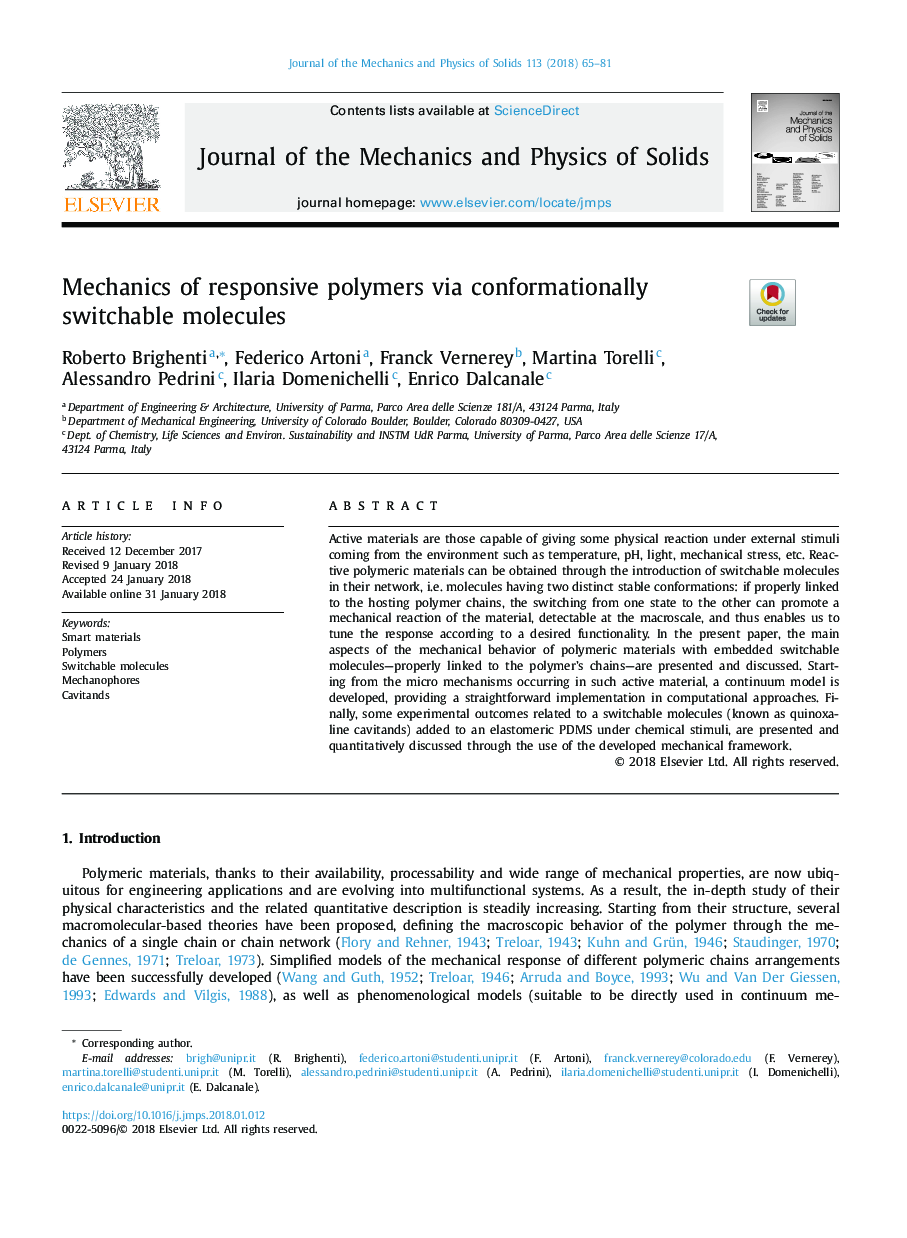| Article ID | Journal | Published Year | Pages | File Type |
|---|---|---|---|---|
| 7177481 | Journal of the Mechanics and Physics of Solids | 2018 | 17 Pages |
Abstract
Active materials are those capable of giving some physical reaction under external stimuli coming from the environment such as temperature, pH, light, mechanical stress, etc. Reactive polymeric materials can be obtained through the introduction of switchable molecules in their network, i.e. molecules having two distinct stable conformations: if properly linked to the hosting polymer chains, the switching from one state to the other can promote a mechanical reaction of the material, detectable at the macroscale, and thus enables us to tune the response according to a desired functionality. In the present paper, the main aspects of the mechanical behavior of polymeric materials with embedded switchable molecules-properly linked to the polymer's chains-are presented and discussed. Starting from the micro mechanisms occurring in such active material, a continuum model is developed, providing a straightforward implementation in computational approaches. Finally, some experimental outcomes related to a switchable molecules (known as quinoxaline cavitands) added to an elastomeric PDMS under chemical stimuli, are presented and quantitatively discussed through the use of the developed mechanical framework.
Keywords
Related Topics
Physical Sciences and Engineering
Engineering
Mechanical Engineering
Authors
Roberto Brighenti, Federico Artoni, Franck Vernerey, Martina Torelli, Alessandro Pedrini, Ilaria Domenichelli, Enrico Dalcanale,
